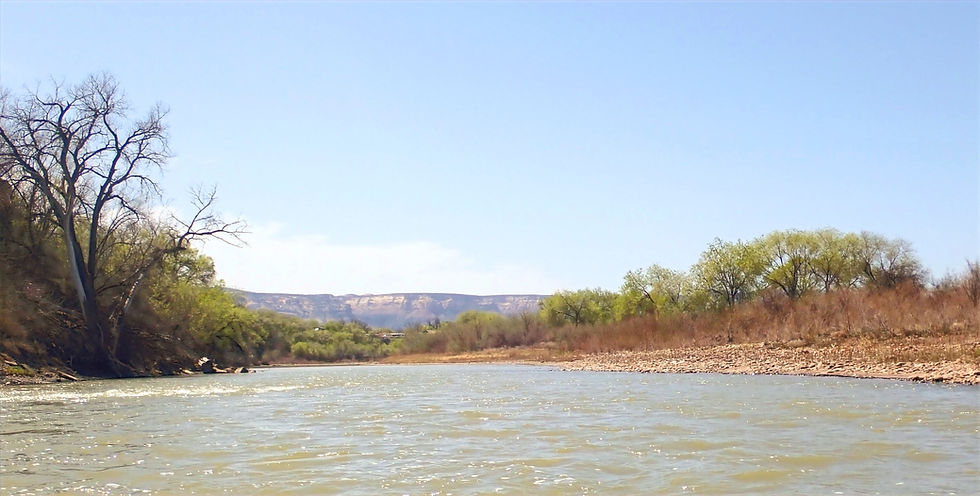The River We Share
- kaitlinlpettit
- Jul 14, 2025
- 2 min read

For the full version of this article, written by TE Board Member Avery Pope, check out our free Substack post or subscribe to our Patreon.
The Colorado River is more than a stunning backdrop for summer adventures—it’s a lifeline. Winding through six states, it sustains over 40 million people, including everyone here in Grand Junction.
For many of us, it’s a place of joy: paddleboarding, fishing, floating under the sun. I grew up on this river, letting the current carry me past the Book Cliffs and Monument, soaking up the desert beauty. But even then, I noticed signs of another reality: tents tucked into the brush, people bathing or washing dishes at the river’s edge.
While I was there to recreate, others were there to survive.

In Grand Junction, urban camping bans have pushed more people to camp along the river. Though the City and police say they try to lead with outreach—offering timelines, housing support, and health services—the situation remains complicated. Without access to toilets or trash services, waste accumulates. Come spring runoff, much of it flows into the river.
That affects everyone.
Contaminated water increases the risk of E. coli exposure—for those washing dishes or bodies in it, and for anyone who swims, paddles, or even just splashes around. The same water that cools us off or carries us downstream may carry health risks if we don’t protect it.

And it’s not just camps impacting the water.
Pet waste from a single dog walk can pollute local creeks and ditches—waterways that feed back into the Colorado. In Denver’s South Platte, pet waste is a major factor behind E. coli levels more than 100 times federal limits. High bacteria counts have triggered health advisories in places like Boulder Creek, too.
Wherever you connect with the river—on a paddleboard or a footpath, out of choice or out of need—your actions matter.
Pick up after your pet. Pack out your trash. If you’re camping, use a groover (portable toilet system) and dump it properly. And if you don’t have one, go far from the water and use techniques that help waste break down without contaminating the river.
Even small creeks near places like Canyon View Park play a role in the health of the whole system. And so do we.
We share this river. Every choice we make along its banks flows downstream—into someone else’s cup, someone else’s dinner plate, someone else’s only source of water.

Let’s treat the river, and each other, with care.
Want to dive into the nitty gritty of the water we share and learn how your actions can affect someone else (and vice versa)? Check out the full blog post for free on our Susbtack or subscribe to our Patreon for early access each month!
.png)



Comments